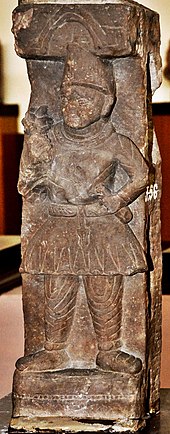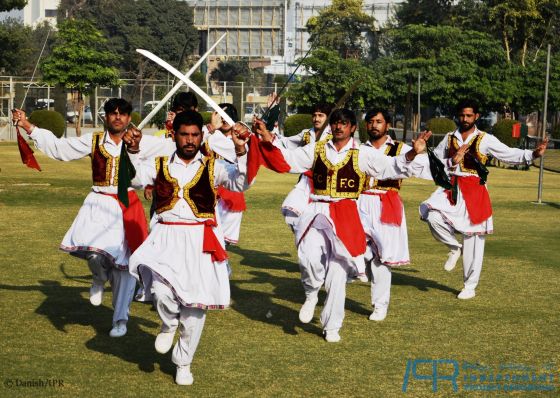Shalwar Kameez originates from a blend of various cultures and there are many variants of it, the most popular is though to have originated from Punjab.
Much of Pakistani clothing can be traced to the Kushans who were based in Peshawar and Taxila.
The cut that you see on the sides that is unique to the Kameez is thought to have derived from the need to better accommodate horse-riding.
There was also a shorter belted and more loose version of the kameez that was popular among the warriors (light infantry), it was utilized in the Indus Region up till the 18th century and is depicted among countless reliefs, primarily in Gandhara.
Female version
Sikh Warriors also utilized this, but often with shorts as a better way to traverse muddy fields.
18th century Sindhi Warriors
If you mean the people of the IVC, then no, Shalwar Kameez came much later. They did however wear an earlier form of what is now known as the Sindhi Arjak.
North Indians do have "Central Asian" blood, accredited to the Indo-Aryans, however it is extremely low and is mostly found in high-caste Brahmins who make up a tiny portion of the North Indian population; it's really not much compared to what is found among Pakistani ethnic groups.






















